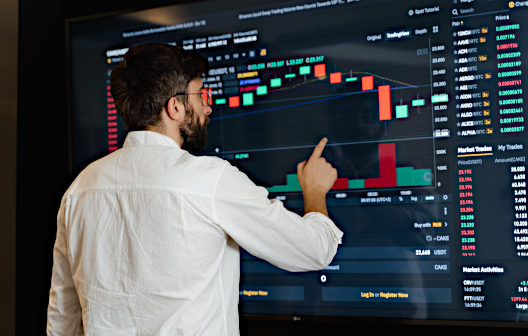The Predictability of Stocks Taking Off as Crisis gives Way to Clarity?
Although past performance is no indication of future returns, uncertainty causes stocks to dive a very high percentage of the time. Clarity, even when not great news, allows investors understanding and a place to build from. Just two years ago investors experienced the dramatic pandemic sell-off during the period between February 12, and March 23rd. The announcements of canceled air travel, major venues such as Disney closing its theme parks, and workers asked to stay home and isolate for two weeks caused a massive sell-off.
When understanding what areas would remain affected by the pandemic, and which would benefit, the overall market rebounded. Sectors such as energy lagged behind any recovery as it was clear that there would be continued weakness and inventories to digest. However, communications stocks took off as it became clearer what consumer and business demand would be. But during mid-March that year, no one knew what to expect and investors couldn’t sell fast enough. Today the strongest sector of the stock market is energy producers which had lagged.
Last week as Russian ground forces crossed the border into Ukraine. A war that was unforeseen by most experts weeks before sent stock markets tumbling. With the ruble now worth less than a penny, or about a fifteenth of what it was a month ago, the Russian economy is said to be barely functioning. European stocks are way down, and U.S. markets have been gyrating wildly from day to day and even intraday.
High Expectations
Chief strategist for Ned Davis Research (NDR), Ed Clissold offers reassuring insight for investors today. In a report that looked at post-crisis markets, he had this to say, “The stock market hates uncertainty, and a crisis by definition creates uncertainty.” Clissold followed with, “Once investors begin to grasp the scope of the crisis, the uncertainty abates and the stock market can recover. Some stocks may still struggle, but benchmark indices tend to rally.”
NDR examined the effect on stocks of over 50 crisis events since the turn of the 20th century. This began with the panic of 1907 and is inclusive of the Covid-19 crash of 2020. The result? He sees a discernable pattern. After falling an average of 7% in the immediate aftermath of a crisis, the Dow rose 4.2% over the next three weeks. Nine weeks later, it had gained 6%, and after 18 weeks, it was up an average of 9.6%, according to NDR.
Not every event followed the exact pattern, as some were affected by larger economic forces, but the study shows a repeated pattern of market reaction.
Some Stats
Germany invaded France 82 years ago. This wasn’t a surprise as a state of war had existed in Europe after Poland had been invaded by Germany the previous year. But stocks still reacted sharply. The Dow dropped 17.1% immediately after, then dipped another 0.5% over the next three weeks. Then, nine weeks later the DOW gained 8.4% and remained up 7% after 18 weeks.
More recently, Russia’s 2014 annexation of Crimea prompted an initial 2.4% drop in the Dow. The index then gained 1.2% after three weeks, 4.4% after nine, and 5.7% after 18, according to NDRs research.
The reaction was a bit different after the 2008 Russian invasion of Georgia. NDR explains this was because there were larger U.S. economic events weighing on the markets with the subprime mortgage crisis. An initial 2.2% drop in the Dow grew with time, as the index fell 4% over the next three weeks, 26% after nine, and 34.2% after 18.
What’s Next?
According to Clissold, there are three factors that determine what happens next.
First, he says, “this is a negative for European economic growth,” citing the many interconnections between the economies of the combatants and the other nations of Europe. He believes it could be a drag on the whole global economy.
The second, according to Clissold, is the effect on energy markets, with Russia being one of the major oil, gas, and coal suppliers to Europe and elsewhere. Germany, for instance, has moved to suspend the certification of the Nord Stream 2 gas pipeline from Russia. This permanently impacts energy dynamics for the major manufacturer.
The third key factor, according to Clissold, “is how the Fed reacts.” Any plans to aggressively raise the federal funds rate are likely off the table, he says.
Managing Editor, Channelchek
Suggested Reading
 Is it Wise to Buy on Dips?
|
 Investing in Leisure Post Pandemic
|
 Hydrogen About to Take to the Skies
|
 Why it May be Prudent in a Down-Market to Allocate to Individual SPACs
|
Sources
https://pesd.princeton.edu/node/586
https://www.nytimes.com/2022/03/03/business/ukraine-putin-markets.html
Stay up to date. Follow us:

|

